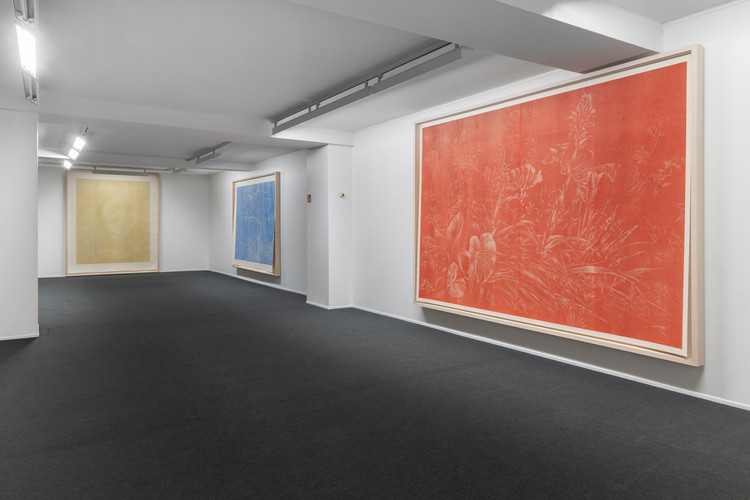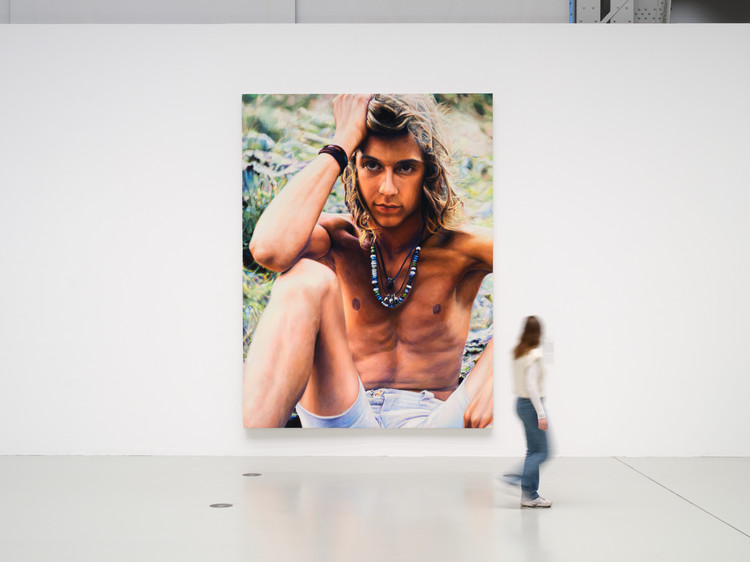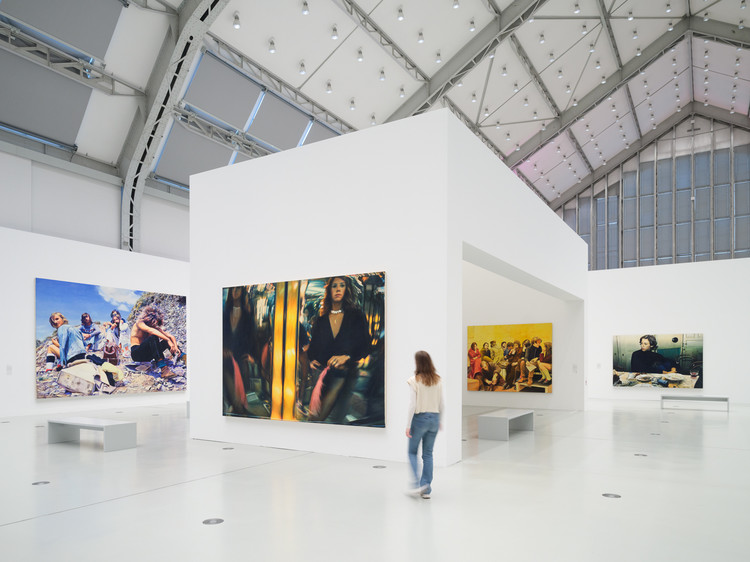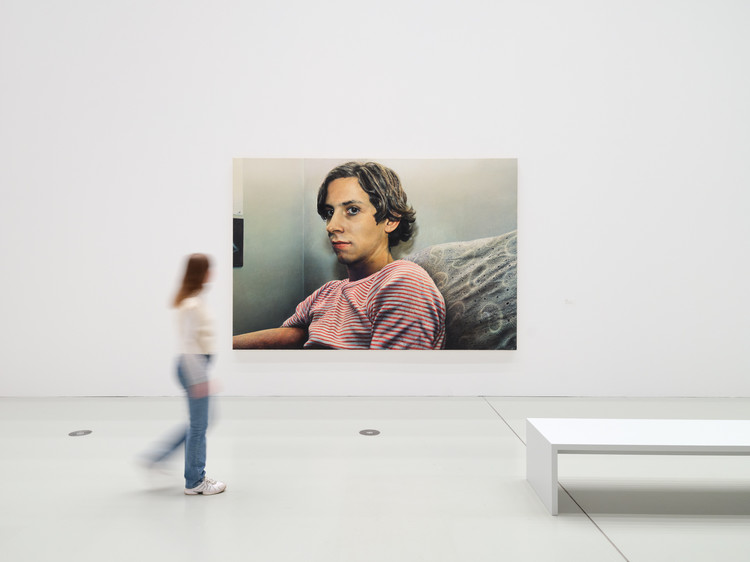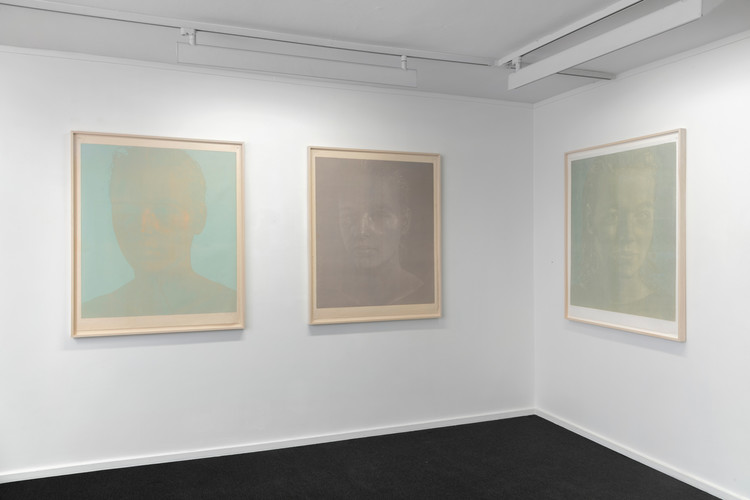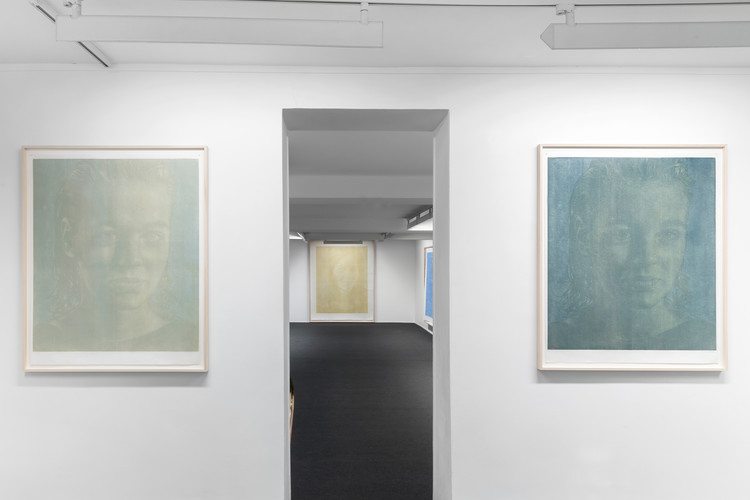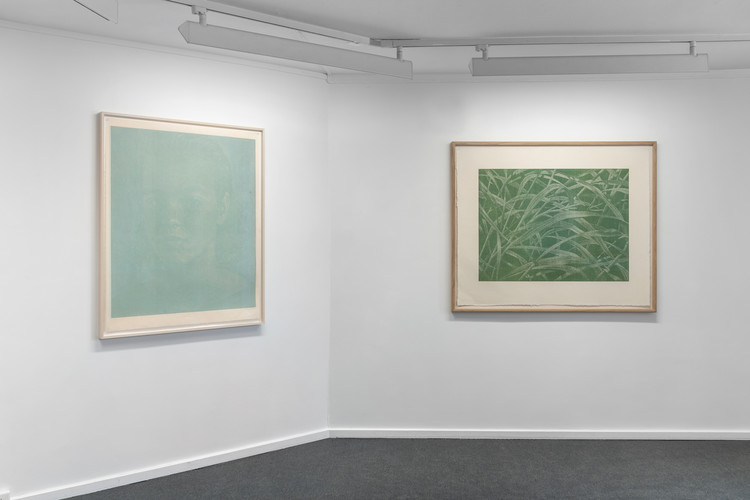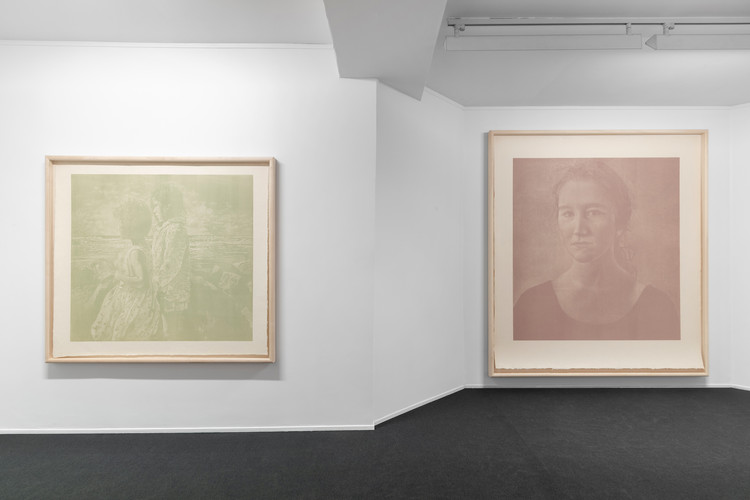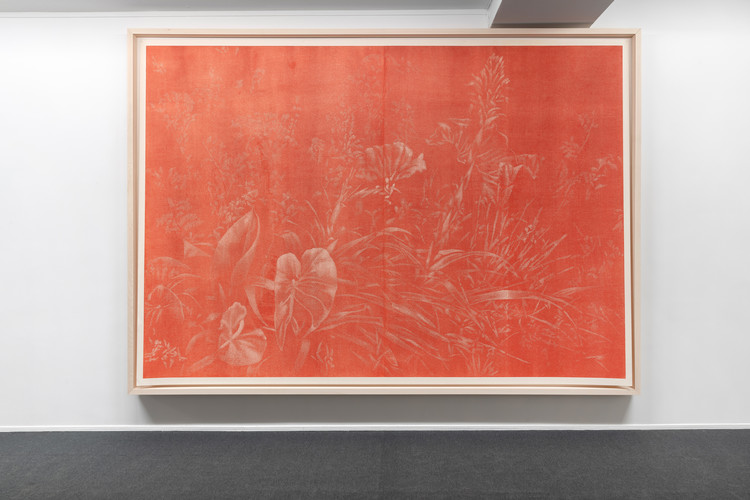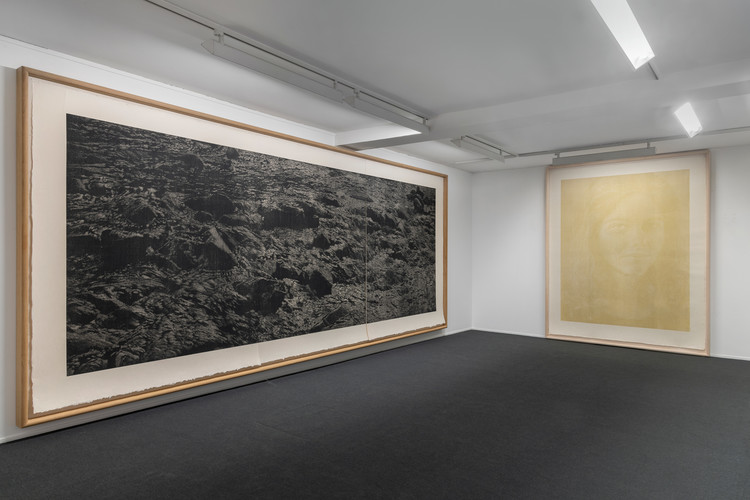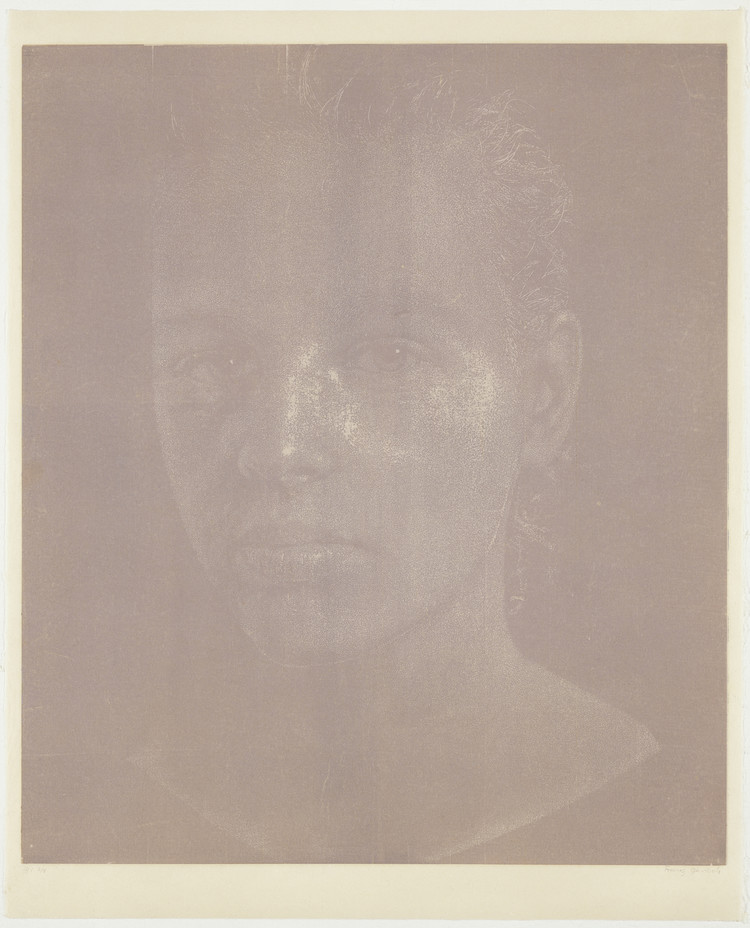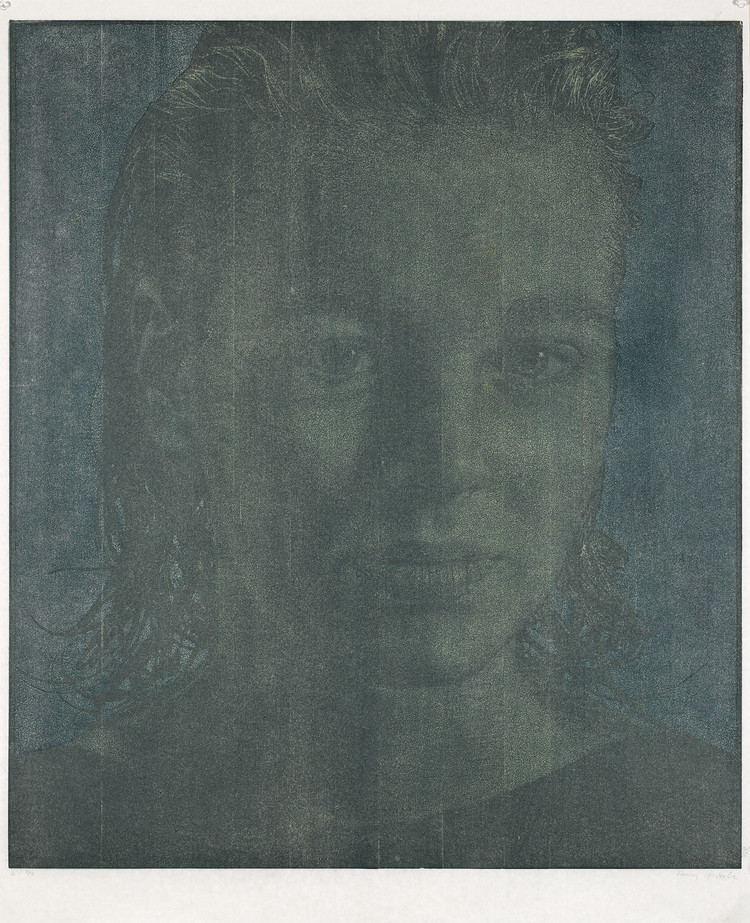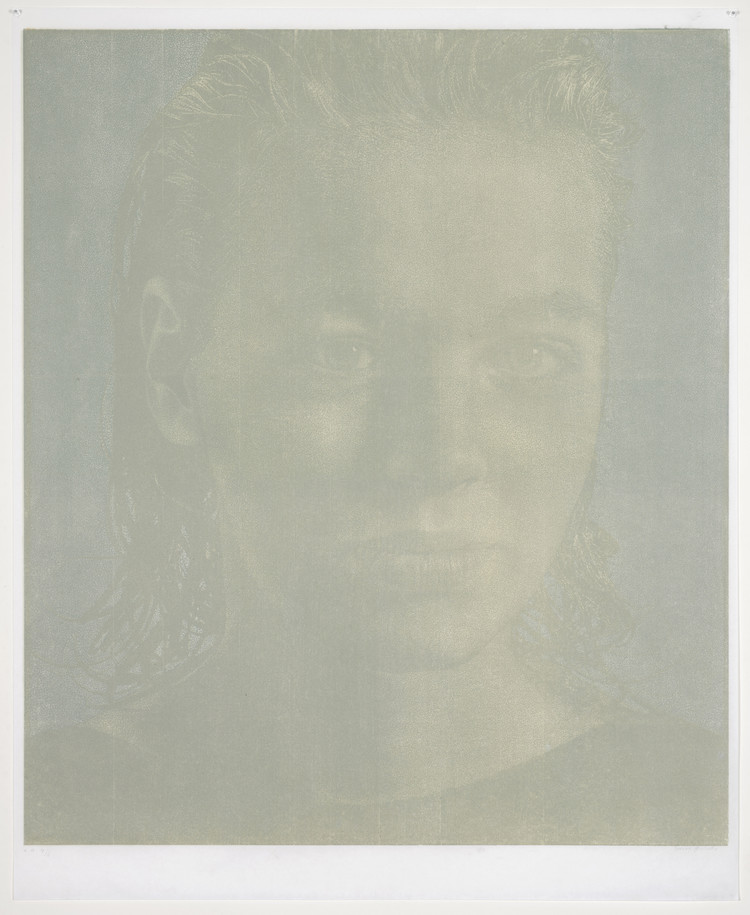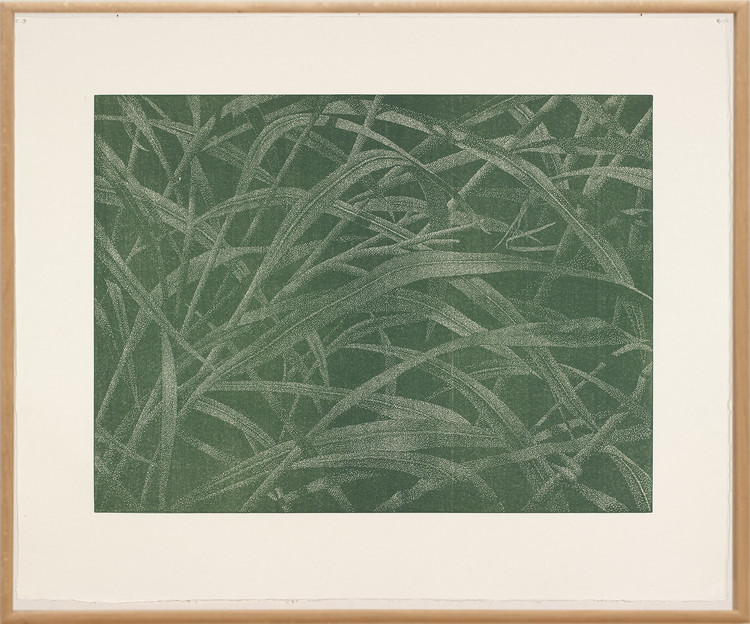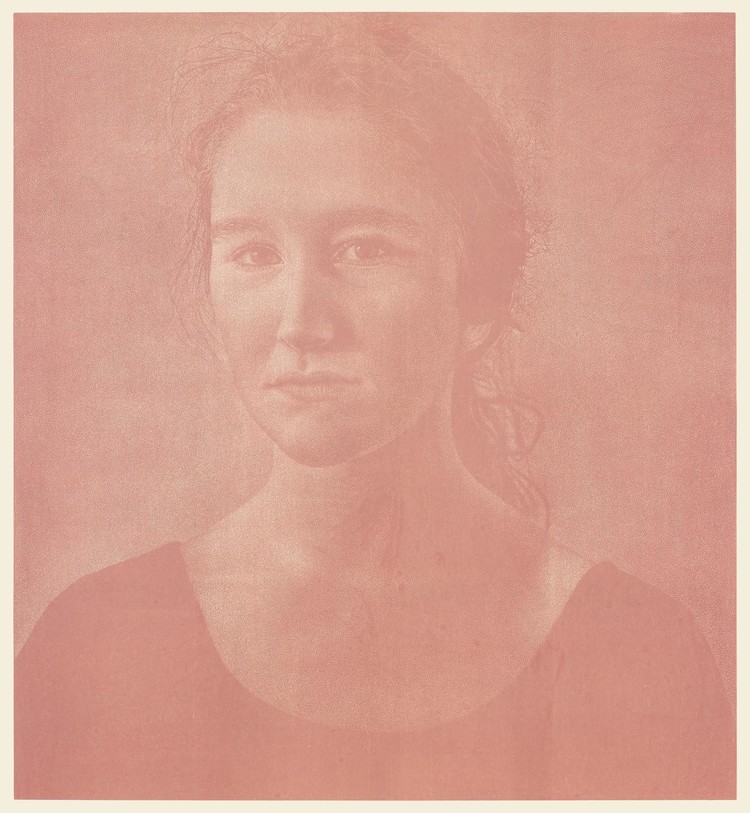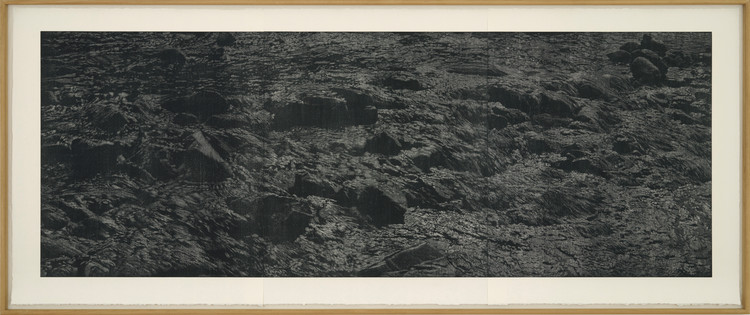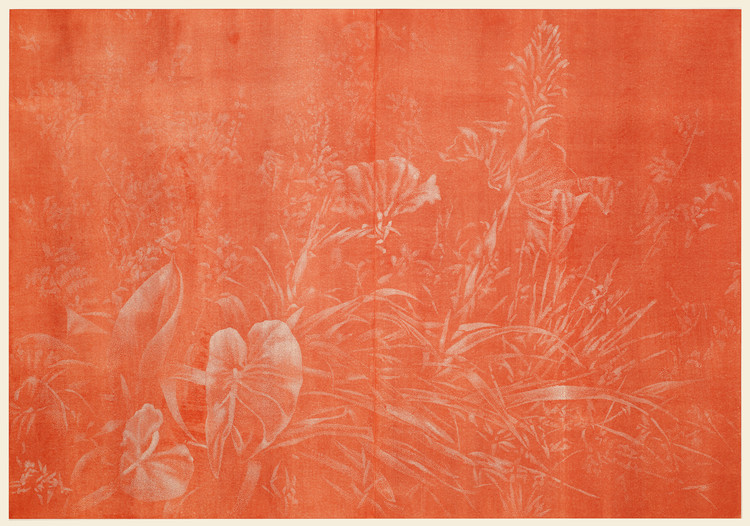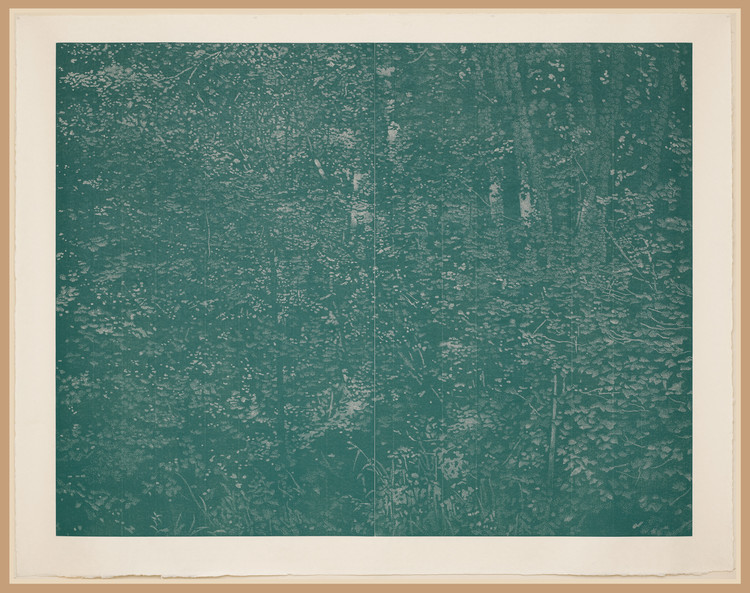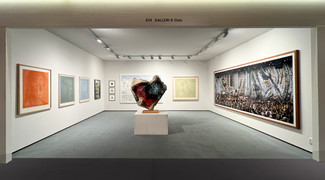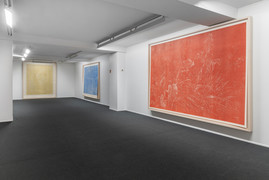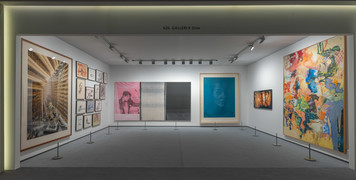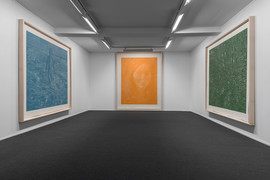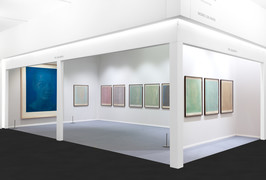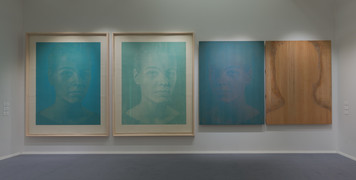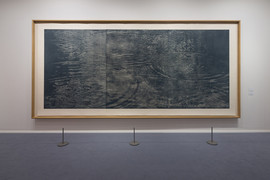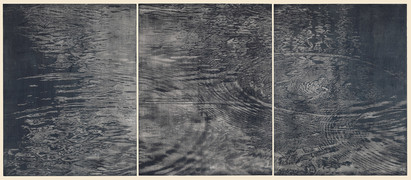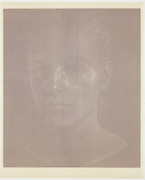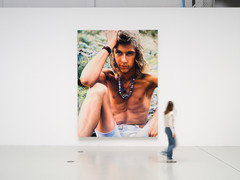Franz Gertsch
Short bio
Franz Gertsch (8 March 1930 – 21 December 2022) was a Swiss painter and printmaker who was known for his large format photorealistic portraits and detailed studies of nature.
Biography
Gertsch was born 1930 in Mörigen, Switzerland. Between 1947 and 1952 he studied with Max von Mühlenen and Hans Schwarzenbach in Bern and had his first individual exhibition at the Simmen Gallery there in 1951. In 1972, he took part in the documenta 5 in Kassel with his painting "Medici". He participated in the 1978 and 2003 Venice Biennale and had a solo show there in 1999. Gertsch’s woodcuts were first shown at the Museum of Modern Art in New York in 1990, curated by Riva Castleman. His work has since been presented at several retrospective exhibitions, the latest due to open in June 2024 at Louisiana Museum of Modern Art in Copenhagen, Denmark, curated by Kirsten Degel. In 2002 Gertsch opened a Museum Franz Gertsch in Burgdorf.[2][4] On the 8 March 2019, Frantz Gertsch’s birthday, the Museums expansion was inaugurated by the Federal Councilor Simonetta Sommaruga.[5]
Gertsch died on 21 December 2022, at the age of 92 in Riggisberg in Canton Bern.[1]
Work
Gertsch is known for his realistic paintings and woodcuts for which he developed a new technique.[3] The artist’s first large sized realist paintings date from 1969, when he painted “Huaa…!”, based on a film still showing a 19th century cavalry man the moment he’s been hit by a bullet. “Huaa...!” initiated the turn to the artist’s brightly coloured photorealistic works of the 1970s, which were often based on Gertsch’s own documentary-style snapshots of family and friends. With these works, Gertsch gained attention as an observer of Swiss counter culture. His self-titled “situation portraits” includes the artist’s depictions of his gender fluid friends getting ready for a party, which was called “a new art form” by the American psychologist and LSD guru Timothy Leary. [1]
Following his participation in the 1972 documenta, Gertsch’s new work featured more tightly framed figures.[2] This phase of the artist’s work ended in 1978–1979 with five portraits of rock musician Patti Smith. In these paintings, Gertsch presents the rock icon in a realistic and authentic way, crouching in front of an amplifier, leaning forward into a tangle of microphones, or seen from behind or to the very edge of the painting.[3]
Moving between painting and printmaking, and portraiture and landscape, he maintained an investment in the photorealist image and its simultaneous citation and monumentalization of the photographic instant.[4] Gertsch’s figurative and photorealistic works can be associated with the European Pop art movement and with contemporary artists such as Gerhard Richter and Sigmar Polke in Germany, as well Chuck Close in the USA. Just like these three artists, Gertsch’s point of departure is the photographic image. Focusing on detailed nature studies and close-up portraits, Gertsch however developed his unique style separating him from the social commentary and ironic motifs of Pop art.[5]
From 1976 to 2013 Gertsch created a total of 28 paintings and 15 monochrome woodcuts; he worked on a single composition for up to a year.[3] In 1986, Gertsch took a break from painting to master the woodcut printmaking technique, in which he has pioneered new territory. In his woodcuts, the artist is said to use colour expressive rather than realistically, in order to define anew the relationship between colour and three-dimensional space.[6] The first motifs were monumental portraits of young women, the various prints were all in different colours and thus assumed the character of individual sheets.[7] In addition to the detailed work in cutting the wooden plates, Gertsch’s graphic prints entail time-consuming mixing and colour testing of binder and mineral pigments especially imported from Japan, and thorough testing of hand-made Japan paper for the best possible transfer of colour from the print plates to the finished result. Colour played a central role for Gertsch – to the artist, the photographic image becomes a bearer of abstract qualities in colour and space. In his own words: «The more I focus on the photographic image, the more I move away from it» – towards recognizing that colour and the work has their own life, separate from the motif.[8]
Brian Murphy, The Washington Post, December 23, 2022
[2] Franz Gertsch. Large scale woodcuts. Cabinet des estampes, Geneva, 1990, ISBN 2-8306-0067-3
[3] https://www.museum-franzgertsc...
[4] Frances Richard, Artforum, May 2004
[5] Exhibition text, “Franz Gertsch: Woodcuts”, Galleri K, 2016
[6] Dieter Ronte, “The Great Natascha“ in Franz Gertsch. Large scale woodcuts. Cabinet des estampes, Geneva, 1990, ISBN 2-8306-0067-3 p. 105
[7] Tobia Bezzola, “The Woodcuts of Franz Gertsch”, in Polyfocal Allover, Lars Müller Publishers/Swiss Institute/Karma, New York, 2021
[8] Exhibition text, “Franz Gertsch: Woodcuts“, Galleri K, 2016
_________________________
Gertsch er født i 1930, og tilhører generasjonen kunstnere som etablerte seg i 1960-årene, i et Europa som etter verdenskrigen nå ble preget av den nye tids forbruk og massekultur. Gertsch’ figurative og fotorealistiske arbeider fra denne tiden er naturlig å assosiere med den europeiske popkunsten og samtidige kolleger som tyske Gerhard Richter og Sigmar Polke, samt en kunstner som Chuck Close i USA. I likhet med disse tre tok Gertsch utgangspunkt i det fotografiske bildet. Han ble i løpet av 1970-årene internasjonalt kjent for hyperrealistiske malerier, blant annet en serie situasjonsportretter av rockestjernen Patti Smith. Særlig viktig var deltakelsen på Harald Szeemanns legendariske Documentautstilling i Kassel i 1972 (Documenta 5), hvor Gertsch’ 400x600 cm store maleri Medici (1971) ble en av hovedattraksjonene. Siden da har han deltatt på Veneziabiennalen tre ganger og blant annet stilt ut på Museum of Modern Art i New York, i tillegg til å få sitt eget museum i 2002, Museum Franz Gertsch i Burgdorf utenfor hjembyen Bern.
Gertsch skulle snart utvikle en særegen stil som skilte ham fra popkunstens samfunnskommenterende og ironiske motiver. Han konsentrerte seg om atmosfæriske landskaper og detaljerte naturstudier, og nærgående, men uutgrunnelige portretter. Viktigere enn representasjonen på kunstverdenens referanseutstillinger ble nå det tidkrevende arbeidet i atelieret, og konsentrasjonen som kreves for å utvikle og utdype bildenes interne logikk og eksistensialistiske nærvær.
Det umiddelbart mest slående med Gertsch’ arbeider er størrelsen – enkelte av tresnittene måler over seks meter i lengden, og mange av bildene er ganske enkelt for store for visning i et vanlig kunstgalleri. Dernest vil betrakteren oppslukes av detaljeringen i de realistiske motivene. Til slutt vil man kanskje undres over den konsekvente bruken av monokrome farger i bildene, altså at hvert enkelt tresnitt er laget i kun én enkelt farge. Gertsch tok en pause fra maleriet i 1986, for å vie seg til å perfeksjonere teknikken i framstillingen av tresnittene. I tillegg til det åpenbare detaljarbeidet i graveringen i treplatene, innebærer Gertsch’ grafiske verker en tidkrevende blanding og fargetesting av bindemiddel og mineralpigmenter, spesielt importert fra Japan, og grundig uttesting av det håndlagede japanpapiret for best mulig overføring av fargen fra trykkplatene til det ferdige resultatet.
Fargen spiller en helt sentral rolle for Gertsch – det fotografiske bildet blir for ham en bærer av abstrakte kvaliteter i farge og rom, eller som han selv sier det: «Jo mer jeg fokuserer på det fotografiske bildet, jo mer beveger jeg meg bort fra det» – mot en erkjennelse av at fargen og bildet har et eget liv, adskilt fra motivet. Derav følger også den repetitive dvelingen ved hvert enkelt motiv i form av serier. Gertsch kan lage opptil et dusin variasjoner over det samme fotografiske utgangspunktet, der duse farger legger seg som slør over det realistiske bildet. Denne kombinasjonen av monumentale formater og subtile variasjoner i fargearbeidet søker å avdekke ukjente og uante sider ved det alminnelige.
Texts
- Franz Gertsch på Louisiana: Karisma i overflod, anmeldelse av Espen Hauglid i Morgenbladet, 16. august 2024
- Franz Gertsch: How I Discovered The Woodcut, Galleri K, 2024
- Franz Gertsch, Wikipedia
- Franz Gertsch, TEFAF Maastricht 2023, Artforum
- Franz Gertsch, nekrolog
- Obituary in Neue Zürcher Zeitung by Tobia Bezzola, 30 December 2022
- Obituary in Artforum, 27 December 2022
- Obituary in The Washington Post by Brian Murphy, 23 December 2022
- "Showing more than the eye can see" A conversation between Franz Gertsch and Gerd Woll
- Gertsch - Gauguin - Munch, Cut in Wood, MASILugano 12.05 - 22.09.19
- Studio 2, P2, Mona Pahle Bjerke 08.04.2019
- Press release TEFAF, Maastricht 2019
- Franz Gertsch, New York Times, 2 November 2018
- Press release, Polyfocal Allover, Swiss Institute Contemporary Art, New York, 2018
- Polyfocal Allover, Swiss Institute Contemporary Art - review by Hiji Nam in Artforum, 2018
- Judd Tully on Sotheby's London Evening Auction, 8 March 2017
- Pressemelding, Portraits and Landscapes, 2016
- The Woodcuts of Franz Gertsch, text by Tobia Bezzola, 2016
- Review by Frances Richard in Artforum, 2004
- Review byMai-Thu Perret in Frieze Issue 80, 2004
- The Museum of Modern Art, New York, May 11-June 26, 1990: Franz Gertsch
- Works in collections
Previous exhibitions
-

TEFAF Maastricht 2025
Mar 13 - Mar 20, 2025
-

Selected Woodcuts
Feb 16 - Mar 23, 2024
-

TEFAF Maastricht 2023
Mar 9 - Mar 19, 2023
-

Selected woodcuts 1986 - 2017
Mar 29 - Apr 28, 2019
-

TEFAF
Mar 14 - Mar 24, 2019
-

TEFAF
Mar 8 - Mar 18, 2018
-

TEFAF
Mar 9 - Mar 19, 2017
-

PORTRAITS AND LANDSCAPES: Woodcuts
May 6 - Jun 12, 2016
